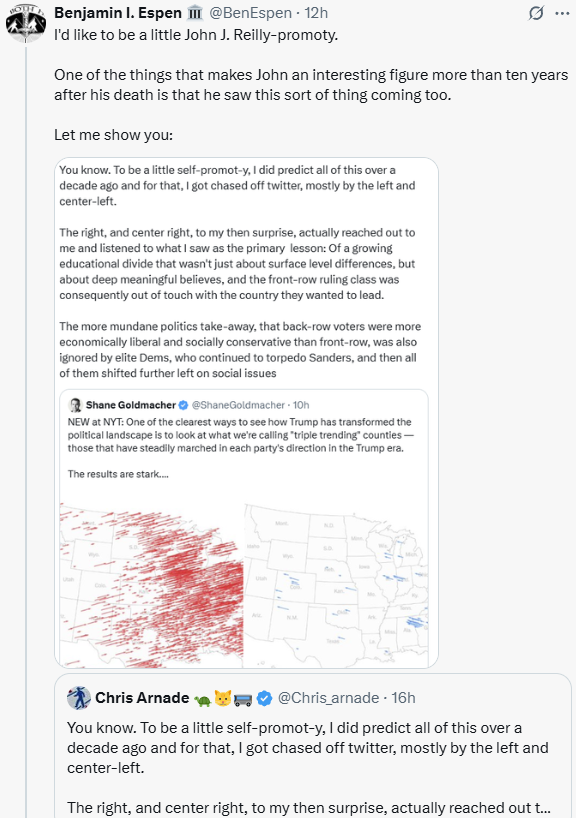The Long View 2006-07-19: The Road to Perdition

Model of the temple district of Tenochtitlan at the National Museum of Anthropology
By Thelmadatter - Own work, Public Domain, https://commons.wikimedia.org/w/index.php?curid=3744781
I recently read that Tenochtitlán, unlike almost all other pre-modern cities, was a population source instead of a population sink. This was due to a combination of the productivitiy of the floating farms, and a lack of the nasty diseases typical in cultures that have been farming for longer periods of time.
The Road to Perdition
Is this news, or just tabloid mischief? We read in today's New York Post:
July 19, 2006 -- JERUSALEM - Hezbollah yesterday warned the United States: You're next on our hit list. The threat against U.S. interests came as the FBI revealed it is searching for Hezbollah terrorist agents operating on American soil.
I have no doubt the facts are true: Hezbollah is making threats and the FBI is looking for sleepers. On the other hand, there are no signs of an imminent terrorist attack in the US, unless you count President Achmadinejad's remarks yesterday that Muslims will rejoice soon. Should an attack in the US occur, of course, it would remove the political and legal obstacles to US strikes against Iran and Syria. Iraq's connections with Al Qaeda were tenuous, elliptical, and contingent. Hezbollah, in contrast, is publicly subsidized and facilitated by Syria and Iran.
I am still inclined to think that all this unpleasantness will blow over: Hezbollah started it, not because it felt confident, but because it had to do something to stay relevant. Still, one can at least see a way now in which the situation could become awkward.
* * *
Meanwhile, this news from the Western Front: California: SACRAMENTO -- Gov. Arnold Schwarzenegger has proposed a powerful new centralized authority under his direct control that would be charged with implementing one of the nation's most far-reaching initiatives to curb global warming.
And we let ourselves be convinced that California would be his last territorial demand in North America.
* * *
Here's a disease I can relate to: prosopagnosia, or face blindness. Without the tireless efforts of the disability industry, I would not now have a term for the fact I am slightly worse than usual at remembering faces. It's certainly true that I tend to identify people by their hair. There was a time in the 1980s when I could not tell one English rock singer from another.
* * *
In a piece about the reintroduction of primitive violence to modern societies, Mark Steyn notes just how ghastly primitive life really is:
Lawrence Keeley calculates that 87 per cent of primitive societies were at war more than once per year, and some 65 per cent of them were fighting continuously. "Had the same casualty rate been suffered by the population of the twentieth century," writes Wade, "its war deaths would have totaled two billion people." Two billion! In other words, we're the aberration: after 50,000 years of continuous human slaughter, you, me, Bush, Cheney, Blair, Harper, Rummy, Condi, we're the nancy-boy peacenik crowd. "The common impression that primitive peoples, by comparison, were peaceful and their occasional fighting of no serious consequence is incorrect. Warfare between pre-state societies was incessant, merciless, and conducted with the general purpose, often achieved, of annihilating the opponent."
We sometimes hear that Late Neolithic man was healthier and better fed than early civilized man, so much so that a question has arisen about how civilization could have started at all. The answer seems to be that civilization is lots safer.
* * *
But is civilization demographically sustainable? Demographers of the early 20th century used to express surprise that pre-modern cities did not, for the most part, sustain themselves by local births, but relied on immigration to maintain their populations. Now those worryworts at Brussels Journal remind us yet again that the same seems to be true of modern urban societies:
“Europe and Japan are now facing a population problem that is unprecedented in human history,” said Bill Butz, president of the Population Reference Bureau. Countries have lost people because of wars, disease and natural disasters but never because women stopped having enough children. Japan announced that its population had shrunk in 2005 for the first time, and that it was now the world’s most elderly nation.
The current situation is not absolutely unprecedented. The population of France fluctuated between 12 and 20 million in the late medieval and early modern eras. The same, or worse, was happening in the rest of Europe. The Ottoman Empire seems to have coincided with a period of population stagnation in its territories. War and disease sometimes depressed populations violently, but sometimes, for economic reasons, people did decline to have the large number of children it took to overcome the high infant mortality. The novelty, perhaps, is fertility levels that are inadequate even when infant mortality is close to zero.
Readers who need to worry about demographic collapse will enjoy the site of The Population Reference Bureau, and especially the PRB's country-by-country demographic profiles
* * *
And yes Virginia, there are spelling reform blogs.. Here is an example from My Space. My own preferences for an upgraded orthography, though fluid, are otherwise.
Copyright © 2006 by John J. Reilly




Comments ()